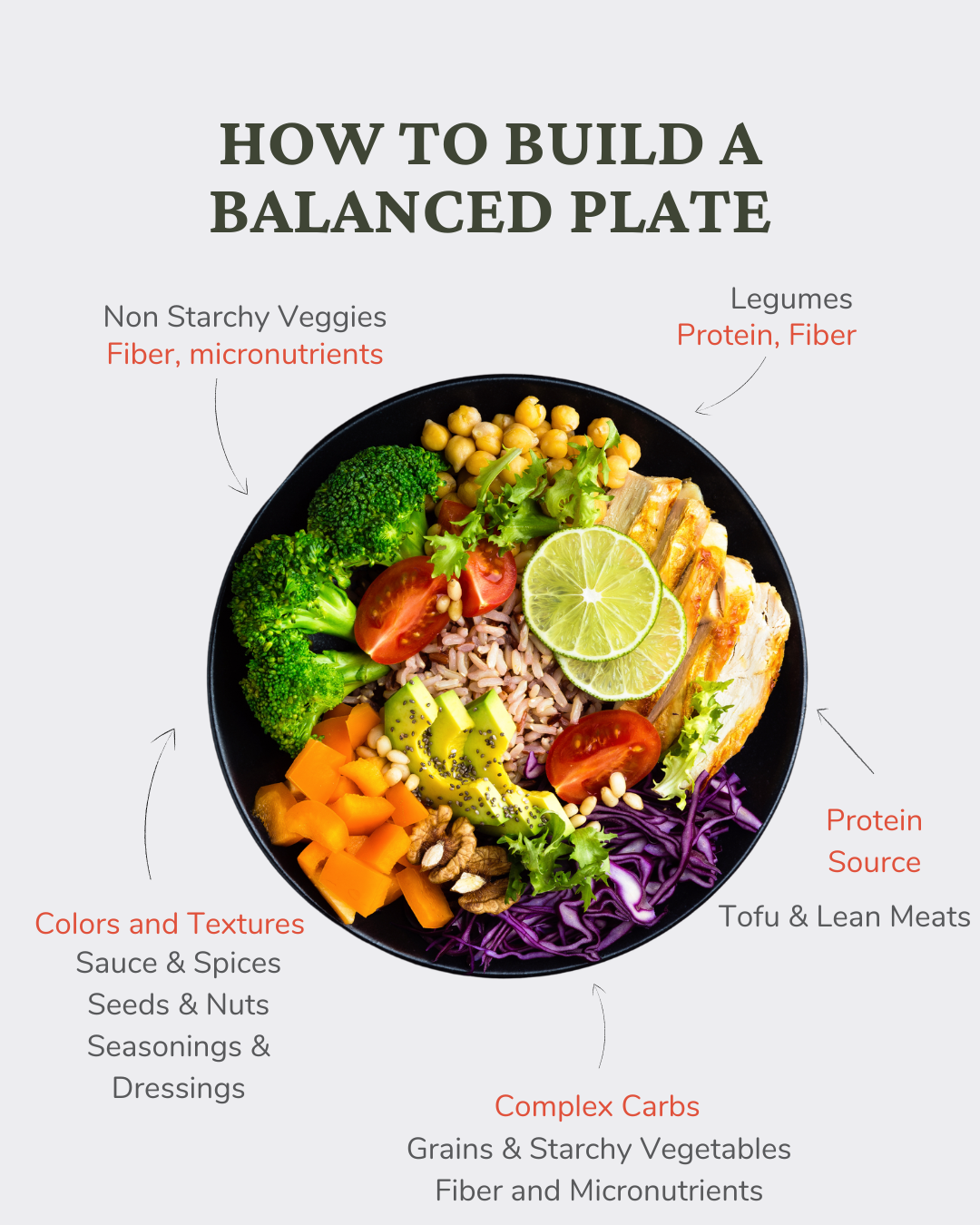
There is so much noise in the diet space- it can be hard to know what is important, what’s real and what are the strategies you should implement to really achieve optimal health. Moderation and balance are two of my favorite and most used words when teaching clients about nutrition. Balanced meals are essential for nourishing our bodies, feeling satisfied and satiated and reducing cravings.
Why is a Balanced Plate Important?
A balanced plate provides our bodies with the essential nutrients they need to function optimally. By including a variety of food groups in each meal, we can ensure that we’re getting a diverse array of vitamins, minerals, antioxidants, and macronutrients.
Here are some key reasons why building a balanced plate is important:
- Optimal Nutrition: Each food group provides unique nutrients that are vital for our health. Fruits and vegetables are rich in vitamins, minerals, and antioxidants, while whole grains provide fiber and energy-boosting carbohydrates. Lean proteins supply amino acids for muscle repair and growth, and healthy fats support brain health and hormone production.
- Steady Energy Levels: Balancing carbohydrates, protein, and fats helps stabilize blood sugar levels and provides sustained energy throughout the day. This can prevent energy crashes and reduce cravings for unhealthy snacks.
- Improved Digestion: Including fiber-rich foods like fruits, vegetables, and whole grains in your meals supports healthy digestion and prevents constipation. Fiber also promotes satiety, keeping you feeling full and satisfied after meals.
- Weight Management: Building a balanced plate can help regulate appetite and prevent overeating. By including a mix of protein, fiber, and healthy fats, you can feel more satisfied with smaller portions and avoid excessive calorie intake.
Tips for Building a Balanced Plate
Now that we understand the importance of building a balanced plate, let’s discuss some practical tips for creating nutritious meals:
- Fill Half Your Plate with Fruits and Vegetables: Aim to fill at least half of your plate with a colorful assortment of fruits and vegetables. These nutrient-rich foods provide essential vitamins, minerals, and antioxidants, while also adding flavor and texture to your meals.
- Include Lean Protein Sources: Incorporate lean protein sources such as poultry, fish, tofu, beans, lentils, or eggs into your meals. Protein helps repair and build tissues, supports immune function, and keeps you feeling full and satisfied.
- Choose Whole Grains: Opt for whole grains like brown rice, quinoa, oats, barley, or whole wheat bread and pasta. Whole grains are rich in fiber, vitamins, and minerals, and provide sustained energy to fuel your day.
- Add Healthy Fats: Include sources of healthy fats such as avocado, nuts, seeds, olive oil, or fatty fish like salmon or trout. Healthy fats are essential for brain health, hormone production, and nutrient absorption.
- Mind Your Portions: Pay attention to portion sizes to avoid overeating. Use smaller plates and bowls, and aim to fill them with a balance of nutrient-dense foods from each food group.
- Stay Hydrated: Don’t forget to hydrate! Drink plenty of water throughout the day to support digestion, metabolism, and overall health.
Building a balanced plate is a simple yet powerful way to nourish your body and support optimal health. By including a variety of fruits, vegetables, lean proteins, whole grains, and healthy fats in your meals, you can provide your body with the nutrients it needs to thrive. With a little planning and creativity, you can enjoy delicious and satisfying meals that promote wellness and vitality.
So next time you sit down to eat, remember to build a balanced plate and savor the goodness of nutritious foods that nourish your body and fuel your life. Your health will thank you for it!

 Previous Post
Previous Post Next Post
Next Post